Bouncing Bet, Common Soapwort, Crow Soap, Wild Sweet William, Soapweed - Saponaria officinalis
|
Saponaria officinalis - Bouncing Bet, Common Soapwort, Crow Soap, Wild Sweet William, Soapweed. Saponaria is a medium-sized genus of about 40 species worldwide, but only 2 of them are found in North America; both of those are non-native. The one presented here is Saponaria officinalis, found in every state except Alaska and Hawaii. The other is Saponaria ocymoides (Rock Soapwort), which is a smaller, branching plant, frequently with reclining stems, is found only in a few states, and rarely persists long once it escapes the garden; both plants have been frequently used in gardens.
Saponaria species contain saponin, which is toxic. The leaves and roots of Saponaria officinalis have been used in the past to make a liquid soap by soaking or boiling them in water.
Found in:
Found in:
AL, AR, AZ, CA, CO, CT, DC, DE, FL, GA, IA, ID, IL, IN, KS, KY, LA, MA, MD, ME, MI, MN, MO, MS, MT, NC, ND, NE, NH, NJ, NM, NV, NY, OH, OK, OR, PA, RI, SC, SD, TN, TX, UT, VA, VT, WA, WI, WV, WY, GS | 
Distribution of Saponaria officinalis in the United States and Canada:
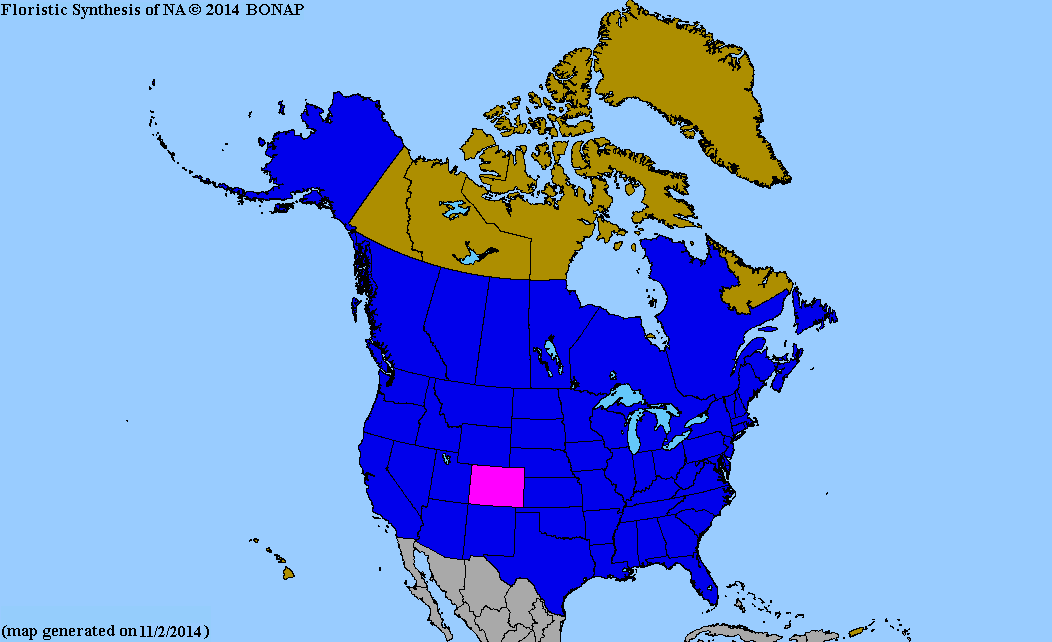
Map courtesy of The Biota of North America Program.
Map color key
Search Our Database: Enter any portion of the Scientific, Common Name, or both.
Do a general Google search of the entire site:
#ad
 Follow USWildflowers on Twitter
#ad
| | Site: Meldrum Bay, Manitoulin Island, Ontario, Canada Date: 2015-August-10 | Photographer: Gerald C. Williamson
Nikon D7000
Tamron SP 90MM f/2.8 AF Macro | | The inflorescence of Bouncing Bet (Saponaria officinalis) is a dense (to somewhat open) cyme of rose-pink to white flowers terminating the stem. | | 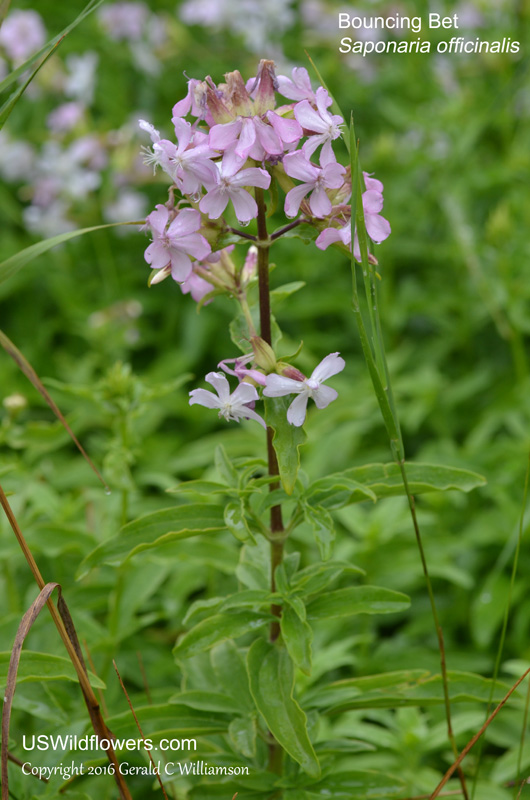
| | Site: Meldrum Bay, Manitoulin Island, Ontario, Canada Date: 2015-August-10 | Photographer: Gerald C Williamson
Nikon D7000 | | Bouncing Bet has 5 rose-pink to white petals (sometimes doubled based on cultivar escapees that have naturalized.) These petals reflex more and more as the plant ages. It has 10 stamens; here without anthers - I don't know if they haven't yet developed, or more likely have dropped from the remaining filaments. It has 2 (sometimes 3) styles. | | Click on the photo for a larger image
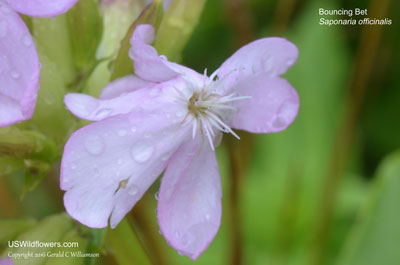
| | Site: Ada County, ID Date: 2016-September-22 | Photographer: Gerald C Williamson
Nikon D7000 | | Saponaria officinalis has a long calyx tubes and shorter calyx lobes. Either or both of these may be green to reddish-purple and are subtended by paired small, leafy bracts. | | Click on the photo for a larger image
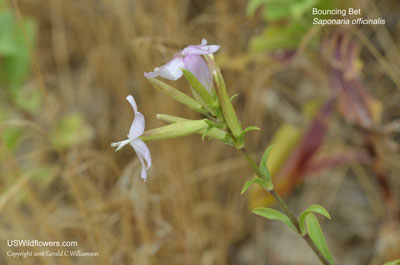
| | Site: Ada County, ID Date: 2016-September-22 | Photographer: Gerald C Williamson | | Saponaria officinalis grows up to about 3 feet tall, usually somewhat shorter. It is sparsely branched, perhaps with some small branches in the upper plant. | | Click on the photo for a larger image
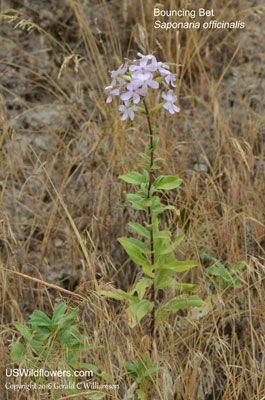
| | Site: Meldrum Bay, Manitoulin Island, Ontario, Canada Date: 2015-August-10 | Photographer: Gerald C Williamson
Nikon D7000 | | The leaves are opposing on the stem. They may be on short petioles, or may be sessile, with the lowest leaves connate. I haven't seen any mention of leafy stipules, so my interpretation of the smaller leaves at 90 degree angle to the main ones is that those are opposing leaves on the beginning of a branch. | | Click on the photo for a larger image
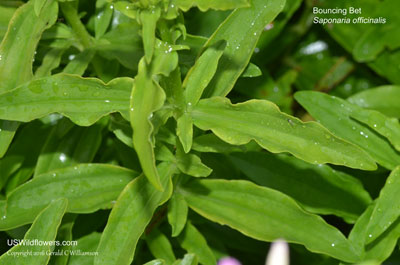
| | Site: Ada County, ID Date: 2016-September-22 | Photographer: Gerald C Williamson
Nikon D7000 | | The leaves are ovate, elliptic, or spatulate. They usually have 3, occasionally 5, prominent veins. The stem is terete - round or oval without ribs. I have seen plants both with green and with red stems. | | Click on the photo for a larger image
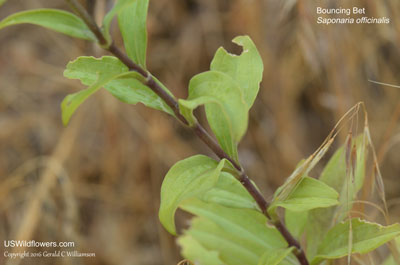
|
References used for identification and information:
|
|
| |
| #ad
|
|








